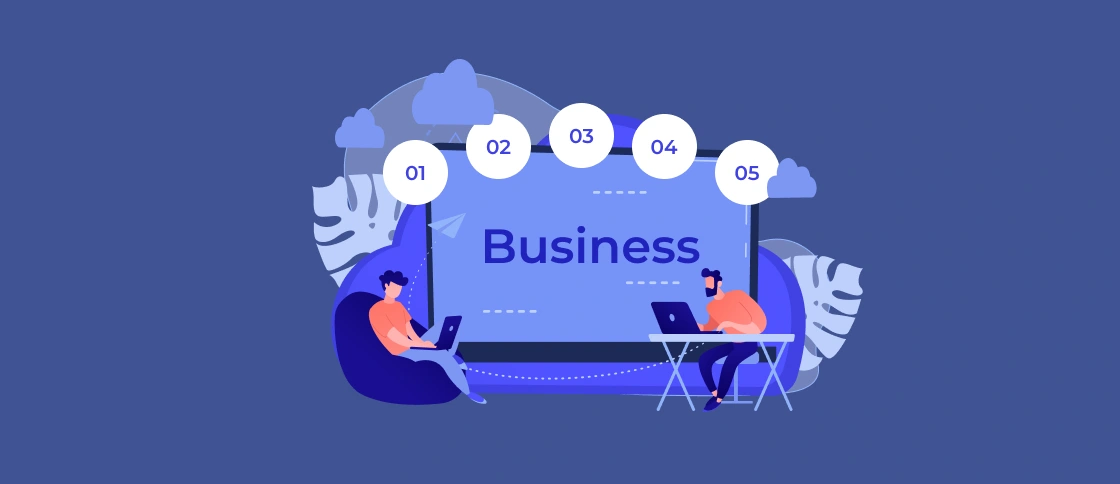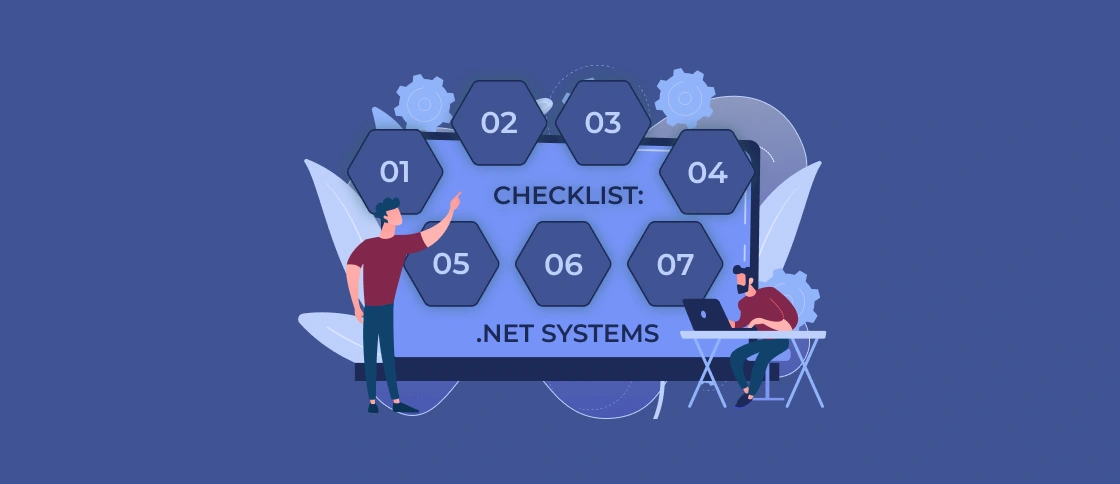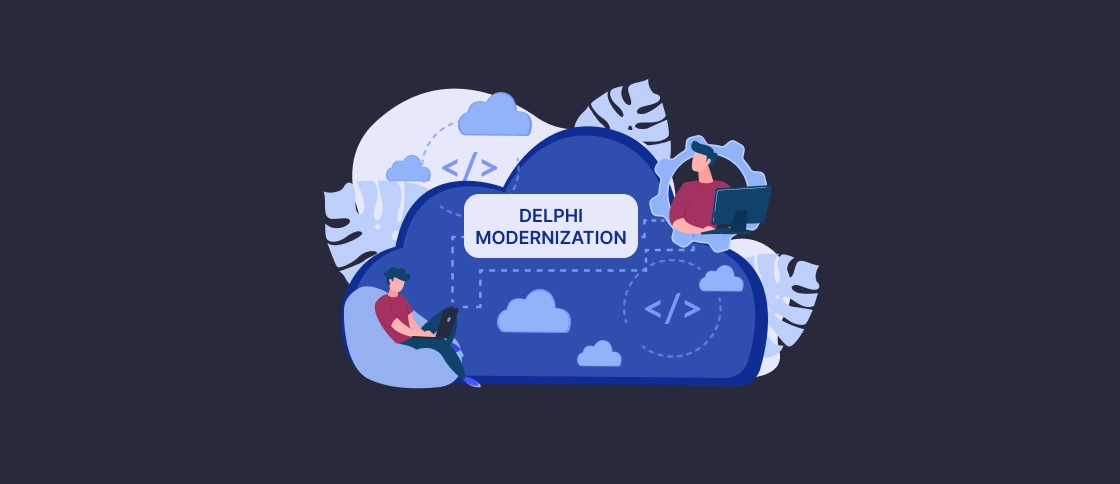- Key Takeaways
- Early Warning Signs Your Legacy System Migration Is at Risk
- Don’t #1 – Treating a Lift-and-Shift Migration as Modernization
- Don’t #2 – Skipping Discovery and Codebase Assessment in an Outdated-Technology Migration Project
- Don’t #3 – Running a Legacy System Migration Without a Strategy or Governance Model
- Don’t #4 – Skipping Safety Rails in Pilot Migration, Testing, and Disaster Recovery
- Don’t #5 – Ignoring Operations, Security and Cost in the “After”
- Platform-Specific Guidance: Delphi, .NET, and Azure Migrate Alternatives
- Make It Work: Patterns, KPIs, and Next Steps for Your Migration Project
- Conclusion
Some people think that legacy application migration means moving code to another place. But in reality, it is not that simple. It can be but it is not the rule. It can be about just updating components of the existing system. However, it may involve rebuilding the entire foundation your business is built on. The poor code is not the reason of projects failing. Usually, it is missing strategy and discipline.
In this guide, we will break down the five most common mistakes in legacy migration solutions. We will explain how to avoid them. We are going to cover why “lift and shift” rarely works and why governance matters to legacy system migration strategy as much as code. You will see how testing and cost management define long-term success.
Key Takeaways
- Always start with a full dependency and SLA inventory to avoid hidden risks.
- A clear strategy and governance model keep budget and ownership under control.
- Testing and environment parity protect your legacy system migration process from costly failures.
- Continuous monitoring and cost management ensure long-term success.
- Modernize smartly: decouple Delphi monoliths and update .NET legacy systems for maintainability.
Early Warning Signs Your Legacy System Migration Is at Risk
Before the existing system’s code even moves, some risks are already visible. If there’s no inventory of dependencies or SLAs, you are flying blind. One hidden database link or background task can break production overnight.
And if there’s no clear owner for business outcomes, decisions drift between teams. And “done” means something different to everyone.
Modernization succeeds when both code and accountability have structure. Start there, or you’ll spend twice as long fixing what wasn’t planned.

Don’t #1 – Treating a Lift-and-Shift Migration as Modernization
As we already pointed out, some companies might think that a legacy system cloud migration is “lift and shift.” It feels quick and safe but in 6-12, you might realize that the existing systems can’t scale and costs go up. What changes the experience is the architecture.
You should use a simple rule:
- Rehost – only for short-term gains or testing feasibility
- Replatform – when you can decouple databases and UI. This strategy applies when you want to have cloud effectiveness with minimal code changes.
- Refactor – when code and design patterns block scaling or automation
For example, moving a Delphi Win32 app to modular services with REST APIs often delivers immediate agility. And, upgrading from .NET Framework 4.x to .NET 8+ unlocks modern deployment and monitoring.
Don’t #2 – Skipping Discovery and Codebase Assessment in an Outdated-Technology Migration Project
It is a common problem that existing systems written in the 1990s-2000s lack documentation. And over the years, knowledge about their architecture is known only to a few employees. And they soon retire. That’s why the first step in any software modernization process is restoring knowledge about your system.
You should start with a legacy system migration audit. Otherwise, you risk missing hidden dependencies. For example, database links, COM objects, file shares, or old schedulers.
Migrating legacy applications without their dependencies leads to failure in the new environment. If you don’t handle linked databases correctly, you can experience inconsistent data.
Overall, if you don’t map your application, changing one part of it can break a completely different system.
Run automated code scans to evaluate technical debt across services and forms. Create a data inventory. Identify retention rules and validate every integration contract.
Don’t #3 – Running a Legacy System Migration Without a Strategy or Governance Model
A legacy system migration strategy gives direction and prevents scope creep. Strategy is where you define goals, boundaries and overall the direction. It provides a roadmap that aligns all stakeholders with a shared vision for the modernized system. Without such a governance model, teams argue over priorities and ownership.
Scope creep is a major cause of project failure, which often results in budget overruns. The project easily goes beyond its plan with new ideas and “nice-to-haves”. And a solid strategy gives a frame. So, the team can guard against requests that fall outside the agreed scope.
Set clear goals and measurable outcomes for your successful migration project. It will help you have a clear path towards your objectives.

Don’t #4 – Skipping Safety Rails in Pilot Migration, Testing, and Disaster Recovery
System modernization without testing can turn into gambling. Lack of documentation and deep integration into business processes make these systems fragile. Errors can lead to system crashes and data loss. Modernization efforts can expose new vulnerabilities if security isn’t tested. Also, without testing, a modernized system might function correctly but fail under real-world user load.
Run a pilot migration in a production-like environment before a full-scale deployment. This will help you uncover performance bottlenecks and integration issues. You will be able to address potential risks early on.
You should also have a disaster recovery and rollback plan. It will help you act quickly and revert to the old system. Keep your environments identical, automate test data refreshes, and document cutover steps. These are critical best practices for migrating legacy apps to modern databases.
Don’t #5 – Ignoring Operations, Security and Cost in the “After”
Once the migrating legacy applications is done, the real work begins. You need to keep your system reliable and secure. Many teams stop after deployment. But business operations deserve as much attention as development.
Establish clear monitoring and alerting so issues are visible early. You should also track performance metrics and resource consumption of your migration process. Build security baselines: encrypt data in transit and at rest and rotate secrets regularly.
Introduce the engineering discipline. You can do that by running post-release reviews and tracking incident trends. These site-reliability habits help prevent regression and ensure predictable costs of ownership.
Modernization success depends on continuous improvement. It is a key principle for any Delphi or .NET software development company.
Platform-Specific Guidance: Delphi, .NET, and Azure Migrate Alternatives
Modernization paths depend heavily on the platform.
For Delphi software development company projects, a proven route is to gradually extract business logic from Win32/VCL monoliths into standalone services. Use the strangler pattern. It means exposing APIs around legacy modules and wrapping old UIs with new shells. Replace pieces step by step without breaking what works.
For .NET legacy systems, moving from older .NET Framework versions to .NET 8 often requires only minimal refactoring. But it delivers major gains. For example, long-term support and access to modern tooling and deployment models.
Tools like Azure Migrate can help with initial assessment. But true modernization depends on architecture.
The key is to balance risk and return. Refactor what blocks maintainability and keep what’s stable.
Make It Work: Patterns, KPIs, and Next Steps for Your Migration Project
Start small: replatform -> refactor -> re-architect.
Track lead time and cost-to-serve. Define success as measurable improvement.
Before you start, check your timeline, budget and the partner’s migration track record. Controlled modernization beats fast failure every time.
Conclusion
Legacy migration success depends on engineering discipline. Avoid shortcuts. Have a detailed migration plan for the afterlife of your system and build with the next decade in mind.
Understanding what are legacy applications is key. They are critical legacy systems that run your business. Treat them with the respect they deserve. Modernization should deliver both stability and innovation.






